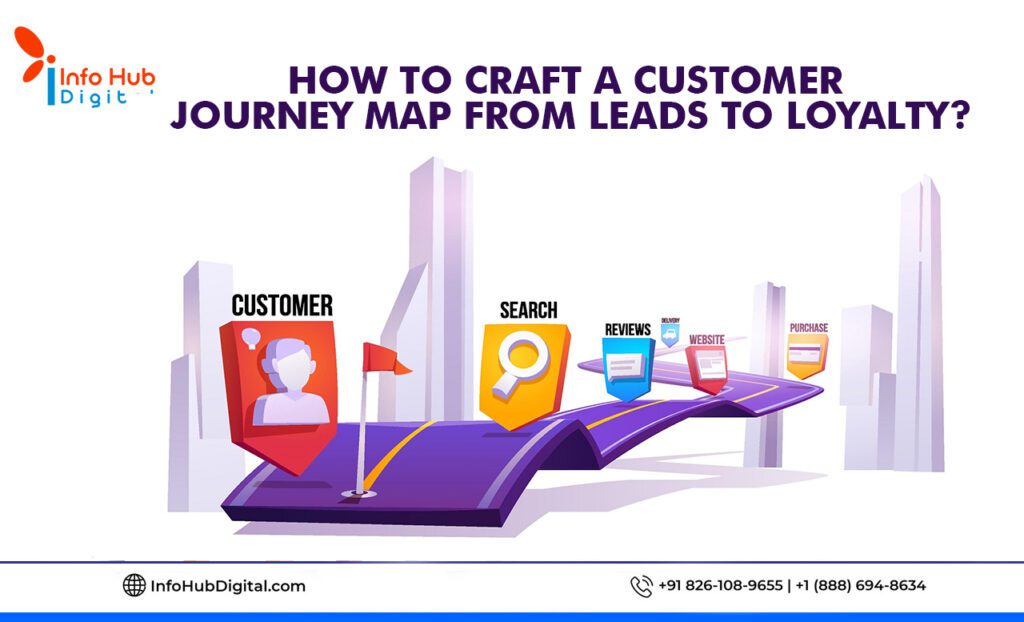Table of Contents
Introduction
In a world where customers have more choices than ever before, crafting a customer journey map has become an indispensable tool for businesses seeking to build lasting relationships with their clientele. In this article, we’ll delve into the art of creating a comprehensive customer journey map that takes your leads on a transformative path towards unwavering loyalty.
The Importance of Customer Journey Mapping
Customer journey mapping is not just a buzzword; it’s a strategic necessity. Understanding how customers interact with your brand at every touchpoint can spell the difference between success and obscurity in today’s competitive market.
What Is a Customer Journey Map?
Before we dive into the intricacies, let’s ensure we’re on the same page. A customer journey map is a visual representation of the customer’s experience with your brand from the moment they become aware of your existence as a lead to the point where they become devoted, loyal advocates.
Understanding Your Audience
Segmentation and Personas
To embark on this journey, you must first understand who your audience is. Segmentation and creating customer personas provide the foundation upon which your customer journey map will be built.
Collecting Customer Data
Gathering data is key to constructing an accurate representation of your audience. It involves mining information from various sources, such as surveys, social media, and website analytics, to paint a vivid picture of your customers.
Identifying Pain Points and Needs
As you collect data, focus on identifying pain points and needs that your customers have at different stages of their journey. These pain points will serve as the waypoints on your map where you need to provide solutions and exceptional experiences.
Mapping the Customer Journey
Touchpoints and Interaction Channels
Dive into the various touchpoints and interaction channels your customers use to engage with your brand. These may include social media, email, phone calls, website visits, and more. Each touchpoint holds valuable opportunities for engagement.
Creating a Visual Representation
The magic of a customer journey map lies in its visual appeal. Create a visual representation that captures the entire journey, from awareness to loyalty. Use colors, charts, and graphics to make it engaging and easy to understand.
Define Stages of the Journey
Break down the journey into distinct stages. Typically, these stages include awareness, consideration, purchase, post-purchase, and loyalty. Clearly defining each stage will help you focus your efforts effectively.
Analyzing Customer Behavior
Customer Actions and Emotions
Analyze customer behavior at each stage of the journey. What actions do they take? What emotions do they experience? Understanding these elements will enable you to tailor your approach for maximum impact.
Gathering Feedback and Surveys
Don’t forget to listen to your customers. Collect feedback through surveys and customer reviews. This data can uncover hidden insights that inform your map’s accuracy.
Identifying Pain Points
Common Customer Frustrations
Pain points are the obstacles customers encounter along their journey. These might include slow response times, confusing website navigation, or inconsistent branding. Identify and address these frustrations.
Moments of Confusion or Uncertainty
Customers often experience moments of doubt or uncertainty during their journey. Identify these moments and provide clarity and support to guide them through.
Crafting a Seamless Experience
Eliminating Friction Points
Now that you’ve identified pain points and moments of confusion, it’s time to eliminate them. Streamline processes and make interactions as frictionless as possible.
Improving User Experience
A seamless customer journey hinges on a stellar user experience. Invest in design and usability improvements to ensure that every interaction is enjoyable and memorable.
Implementing Changes
Making Data-Driven Decisions
Implement changes based on data and insights you’ve gathered. Data-driven decision-making ensures that your efforts are aligned with customer needs.
Testing and Optimization
Don’t stop at implementation. Continuously test and optimize your customer journey map to adapt to evolving customer preferences and market dynamics.
Monitoring and Measuring Success
Key Performance Indicators (KPIs)
Establish KPIs to gauge the effectiveness of your customer journey map. Metrics like conversion rates, customer satisfaction scores, and retention rates will provide valuable feedback.
Continuous Improvement
A customer journey map is not static; it’s a dynamic tool that requires continuous improvement. Regularly review and refine it to stay aligned with your customers’ evolving expectations.
Maintaining Customer Loyalty
Building Relationships
Loyalty is built on relationships. Nurture these relationships by maintaining open communication, offering personalized experiences, and showing appreciation for your loyal customers.
Personalization and Customer Retention Strategies
Tailor your marketing and communication efforts to each customer’s preferences. Implement customer retention strategies to keep them engaged and committed to your brand.
Conclusion
In conclusion, at Info Hub Digital, we take immense pride in being a trusted partner on your journey towards digital marketing excellence. Our commitment to understanding your audience, crafting seamless customer journeys, and continuously optimizing strategies sets us apart as a leader in the field. As a top-tier Lead Generation services provider agency in India, we’ve consistently delivered outstanding results, helping businesses thrive in the ever-evolving digital landscape. If you’re ready to supercharge your lead generation efforts and boost your brand’s success, look no further than Info Hub Digital. Contact us today to embark on a transformative digital marketing adventure that leads to unparalleled growth.







